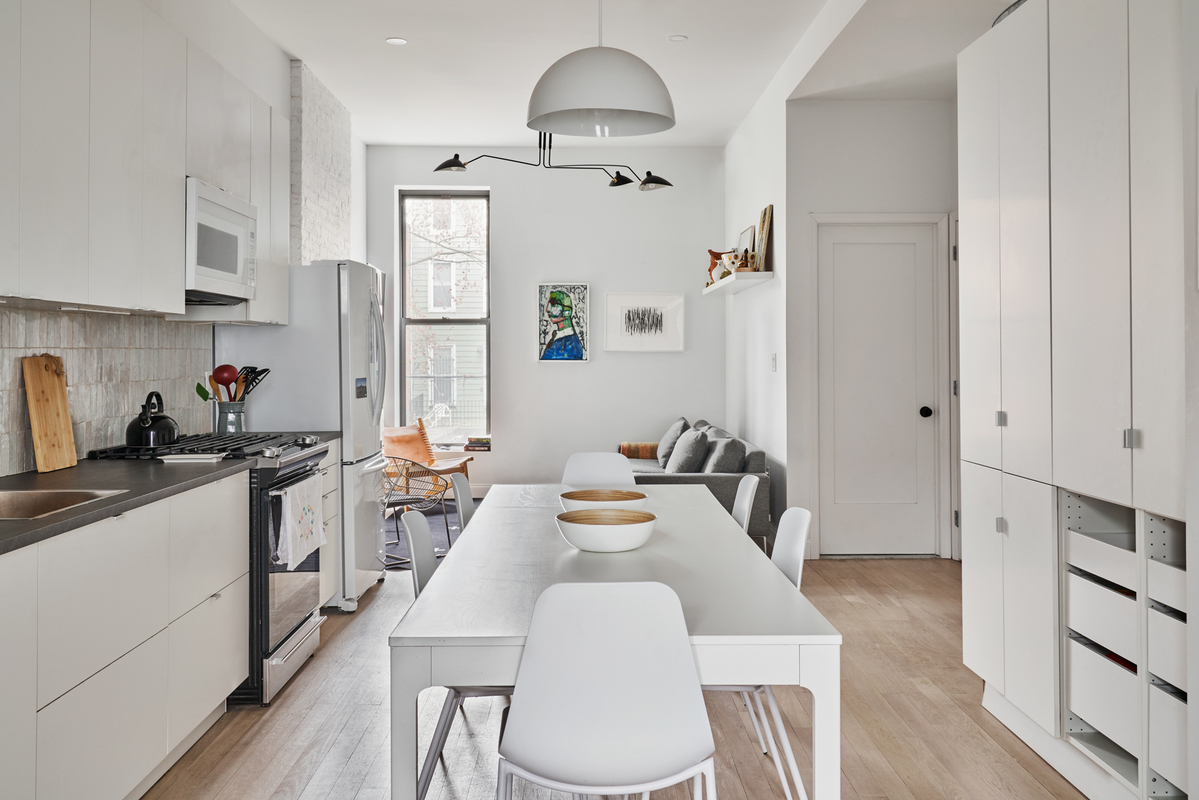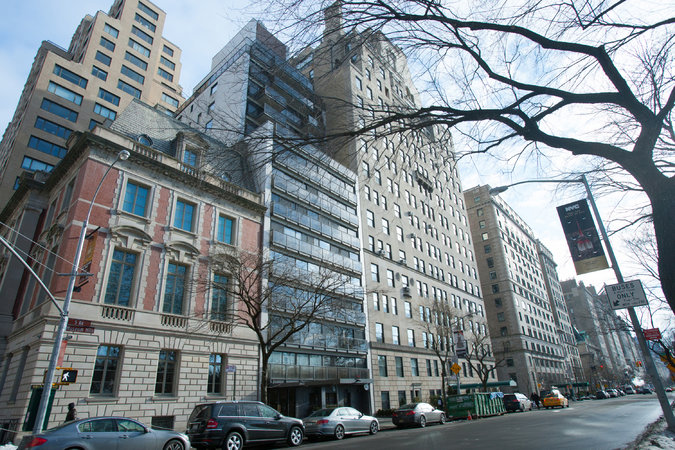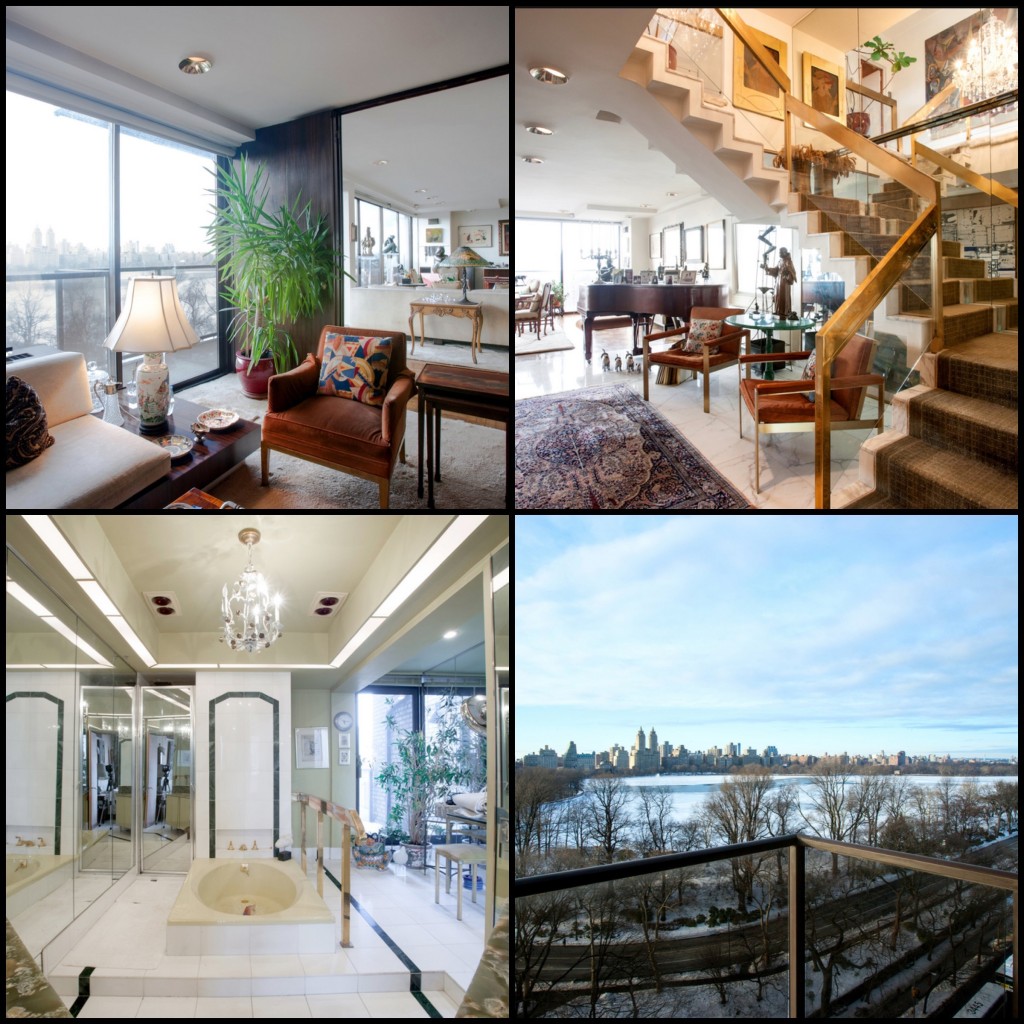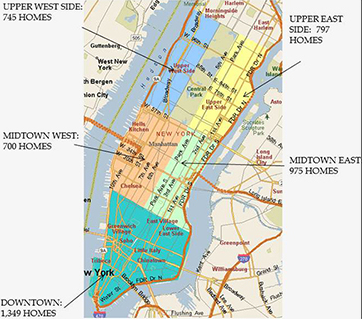Renovating During COVID-19: What You Need to Know

This drool-worthy kitchen renovation was completed before the New York State pause order. (Amory Wooden/354A Gates Ave.)
The quarantine has been wreaking havoc on individuals and industries across the city. But for NYC homeowners renovating during COVID-19, the pause is creating a uniquely stressful situation.
The NYC Department of Buildings (DOB) had to implement Governor Cuomo’s executive order to halt all nonessential construction, which impacts most residential projects. It has created a slew of problems for renovating homeowners, from permit issues to living in ongoing construction sites.
For Amory Wooden, the Senior Director of Marketing at StreetEasy, the stop-work mandate created a mountain of questions about what will happen to her Fort Greene home’s gut renovation project.
“Trying to get a construction loan during COVID has been a nightmare,” she says. “You can’t get an appraiser to come to the house, banks are hesitant, and it’s hard to get anything notarized. Plus, we only budgeted for the house to be vacant for a certain amount of time. We’re panicked.”
Wooden’s situation is similar to many others. A recent New York Times article told several renovation-disaster stories. So, what are homeowners to do? Here, experts offer answers to some burning questions amid the pandemic.
What Is Considered Nonessential Construction in NYC?
The Governor’s executive order halted nonessential construction across the state in late March. The DOB is responsible for identifying projects as essential or nonessential. Those deemed essential include affordable housing projects, utility projects, and hospital projects. Everything else, including apartment alterations, is filed under nonessential and has been put on pause.
According to NYC DOB Press Secretary Andrew Rudansky, that means more than 35,000 construction sites across the five boroughs had to shut down. However, even if your project was initially deemed nonessential, you can submit an online application through the DOB NOW system to try to flip the decision.
DOB plan examiners review each of these requests on a case-by-case basis, to determine whether the project is necessary and what work will be allowed to proceed. This application portal was created for projects such as emergency work, work performed by a solitary worker, and work where the developer is unsure whether their project is considered essential under state and city guidelines.
Are NYC Contractors Allowed to Work?
While renovating during COVID-19, the short answer to this question is yes. But of course, it’s complicated.
The list of approved essential and emergency construction sites that can work is shown on the DOB’s real-time Essential Construction Map, which is updated several times a day. Only locations on the map are allowed to continue construction.
General contractors like Stephen England of Capital Craftsmen, which specializes in high-end residential Manhattan apartments and townhouses, fall into the nonessential category. Therefore, they are on pause. “However, we are fully functional from a management perspective, bidding on projects and planning,” England says.
It is important to note that New York State guidance does allow for renovating by a single worker during COVID-19 under the Solitary Work exemption, provided that worker is the only person on the worksite. Also, things like safety and inspection are considered essential, according to Steven Wakenshaw, an architect and partner with DHD. “There still could be things happening,” he says. “A contractor can be doing essential work on a nonessential job.”
Can Residential Buildings Ban Renovating During COVID-19?
Even if you have just one worker in your apartment taking care of a portion of your project, individual condo and co-op buildings can prevent any work from happening. That could create problems with management and co-op boards.
“Owners in this situation should be talking with their property management company contact as the first port of call,” says England. “If this is a nonstarter and they wish to pursue the matter further, they could inquire with a construction attorney. In reality, most owners will not go that route for financial reasons, and perhaps to avoid creating some tense relationships long-term.”
Wooden also notes that it’s more likely a neighbor will complain, since more people are at home nowadays. “The volume of construction complaints is through the roof,” she says. “So trying to sneak the work in is not easy.”
Unfortunately, according to England, the best solution at present is to monitor the governor’s updates. Currently they show May 18 as the first potential day for construction.
What’s the Status of DOB Permit Reviews?
The DOB is providing 100% of the services they did before the outbreak of COVID-19 in NYC, according to Rudansky. It continues to review work applications that are filed. But it is limiting the amount of in-person interactions at its offices.
“Drop-off boxes are available for permits and permit renewals, yet some applications must be performed via the eFiling system,” said England. “So, the DOB is functioning, but be prepared for longer processing times. I would advise anyone who needs new or revised permits to contact their expeditor for specific help and timeframes, as per usual.”
When Will NYC DOB Reopen?
The DOB offices are open, according to Rudansky. Due to the critical public safety role the department plays in NYC, they never fully closed down. All of the offices are currently open on weekdays from 8:30 a.m. – 2 p.m.
However, the department has created online and mail alternatives for most of its filings/transactions and is strongly encouraging the public to use those options instead. “We are urging people to visit a DOB office only if it is necessary,” he says. “As a result of our efforts, we have seen an over 90% reduction in foot traffic in our offices.”
Currently, the DOB does not have a date for when things will return normal.
How Much Does it Cost to Pause a Remodel During COVID-19?
This is probably one of the hardest questions to answer, and the scenario causing the most grief for owners.
“Every construction contract will deal with this differently,” says Wakenshaw. “And the cost to the owner will vary greatly depending on the project phase. Many contracts will have legitimate claims on the delay; others may have removed pandemic as a cause for delay. All pauses will have a cost. The contracts will decide who pays for it.”
In the residential space, property owners like Wooden are now having to stay elsewhere for longer and only had a set amount of funds set aside to complete the renovation project.
“Our construction loan is only for a year,” she says. “If we can’t get permits or construction doesn’t resume soon, we’re going to have a big problem. We can’t keep paying our rent and our mortgage on the townhouse.”
Of course, in addition to owners, contractors are losing revenue streams, and many construction workers are now unemployed or furloughed. “The financial impact across the board is big, and nothing we have collectively seen before in our lifetimes,” says England.
What Are the Dangers of Doing Unpermitted Construction?
During COVID-19, DOB inspectors are active and issuing fines.
According to Rudansky, the maximum penalty for a single work-without-a-permit violation is $25,000. But, depending on the scope of the illegal work, and other violating conditions found, they might issue multiple violations. That’s in addition to issuing a stop work order, preventing any further construction from taking place.
“As with any construction work that does not have the correct plans on the job site or the correct permits, the risk of violations is not something any owner or contractor should be taking,” says England.
What Can Owners Do While Construction Is on Hold?
Although current COVID-19 restrictions prevent a lot of renovation work from happening, there are legal things you can still do to keep the project moving forward.
“It’s a great time to move forward with design, do your filing, submit to the DOB, etc.,” says Wakenshaw. “There’s a lot of processes that happen without anyone being on site. Use this time to have virtual meetings with your architect.”
Wooden is using the time to order all the materials for her renovation. “I want to get the construction moving as soon as restrictions are lifted,” she says. “If everything is ordered and ready to go, hopefully we won’t have to wait any longer than we already have.”
Original article on StreetEasy is accessible here;




